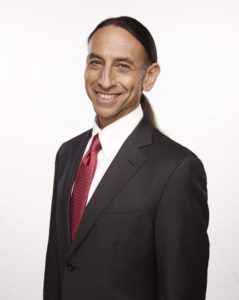Quite honestly, I’ve been neglecting TheDrewBlog as I wrapped up my first book, The CMO’s Periodic Table: A Renegade’s Guide to Marketing. Which, of course, it’s not without irony since one of the mandatories to effective blogging (that I prescribe to others in the book) is consistent output not to mention the fact that TheDrewBlog has been the wellspring for most of the book! That said, I’m happy to report that the last chapter of the book is now put to bed thanks to my new best friends at the Pedigree Foundation (more on that in my next post).
In the meantime, I wanted to share some updated information from the master of real time marketing, Adam Naide. Adam is the Executive Director of Social Media for Cox Communications and in the course of our correspondence about his “Element” (Real Time Marketing) in the book, provided some amazing details about a Vine they commissioned around the time of the Breaking Bad finale. This hand drawn Vine (see below) was promoted using the hashtags #BreakingBadFinale and #GoodbyeBreakingBad and ended up inspiring over 1.24 million tweets. That translated to 22,400 tweets per minute during the final episode which for those keeping count a home broke all sorts of records. As you can see for yourself on the Vine, it generated nearly 100K loops, 7K reVines and 9K likes, all organic to Vine! Adam noted that, “Our ability to insert ourselves in the conversation early with shareable, high quality original content paid huge dividends.”
And just in case you have forgotten our original interview, I’ve reprised it below. It’s rich with insights on how to get real time right.
Drew: What’s been working for Cox TV in the area of RTM?
First, the Breaking Bad Final Season. Our objective was to drive fan growth and increase engagement on @CoxTV during the final season of Breaking Bad. Seeing the volume of social conversation, specifically on Twitter, around the final season of Breaking Bad, our team developed a real-time campaign to cover each episode of the final season with live coverage, engaging custom content, Vine videos, and a RT to win contest. As a result, the campaign attracted 3,145 new followers, nearly doubling the follower base on Twitter. It also led to 5,757 retweets.
 Second, National Donut Day. Our objective in this case was to capitalize on real-time opportunities as they presented themselves. In summary, custom creative was produced for Cox’s Facebook page tying The Simpsons to National Donut Day. The post saw immediate lift on Facebook and was promoted to amplify impact. Seeing that #NationalDonutDay was trending on Twitter, the team quickly posted and promoted the creative on Twitter as well. As a result, the tweet saw 87% higher engagement than average tweets posted to @CoxTV and 67% greater cost efficiency than average promoted posts on the handle.
Second, National Donut Day. Our objective in this case was to capitalize on real-time opportunities as they presented themselves. In summary, custom creative was produced for Cox’s Facebook page tying The Simpsons to National Donut Day. The post saw immediate lift on Facebook and was promoted to amplify impact. Seeing that #NationalDonutDay was trending on Twitter, the team quickly posted and promoted the creative on Twitter as well. As a result, the tweet saw 87% higher engagement than average tweets posted to @CoxTV and 67% greater cost efficiency than average promoted posts on the handle.
Drew: Can you give an example of a real-time program that didn’t work as well as you hoped?
Sure. We had hoped to capitalize on social buzz around the MTV video music awards to engage music fans on Twitter while growing the fan base. So @CoxTV live-tweeted the awards through an existing brand influencer “Sara” who had previously covered TV and entertainment for the brand. Unfortunately, Sara entered the live- tweeting event with a preexisting personality that didn’t jive with the VMA audience. She wasn’t a fan of the artists being featured and didn’t participate in the conversion in a relatable way. In this case, the live-tweeting event garnered just 80 new followers and 1,024 retweets,
Drew: Can you gives some examples of brand RTM #fails?
Hashtag hijacking [is the most common #fail.] Consumers “hijack” brand led hashtags to share negative brand sentiment, to the point that the hashtag is overtaken by the abusers and the original meaning is lost. Here are three examples of #fails that the press pounced on: #McDStories, #IloveWalgreens and JPMorgan Live Chat.
Drew: Why do think brands fail so often to get RTM right?
Brands assume that the public perceives the brand in the same way that the brand perceives itself.
Drew: How do you avoid this?
Start with the current behavior of consumers and find ways to mimic, play off of, or join that activity. Don’t force an unwanted idea or perception on consumers. Monitor what organically bubbles to the surface in your industry or trending hastags that are relevant to the brand. As you would with a new acquaintance or friend in real life, find a common interest between you and the consumer and talk about that.
Drew: Let’s review some of the logistical issues when dealing with RTM.
DN: Staffing? AN: Leveraging real-time opportunities requires full-time monitoring. Listening to social activity is the best way to find opportunities that bubble to the surface.
DN: Client Approval Process? AN: To take advantage of real-time opportunities, a level of trust must exist between agency partners and the client. Planned opportunities are created by the agency and approved by the client, but many real-time opportunities must be created and promoted based on shared goals and strategies for the year, without client approval.
DN: Brands Should Avoid? AN: Brands should avoid forcing real-time content. Steer clear of touchy subjects and irrelevant holidays. For example a baking brand should talk about Thanksgiving, but should not talk about Veteran’s Day.
DN: Barriers to Success? AN: Time and resources. Joining in on trending conversations requires the ability to identify the opportunity, ideate on a response, create content, gain approval and post. This process can be complicated on weekends or after business hours.
DN: The Right Metrics? AN: Real-time marketing is really about exposure and sentiment. Metrics like reach, impressions, retweets, and earned positive buzz are all metrics that should be assessed.
Drew: How do you see customer care evolving in the age of social as real time marketing?
In our category, our competitors employee dedicated sales reps that mine the social chatter for customer complaints on Twitter… then will reach out to these customers with offers to switch. Many times, they will get to these vulnerable customers before the brand does. It’s become a new front in the competitive battle for market share, one tweet at a time.
Drew: Can you summarize with 3 key factors to getting RTM right?
- Relevancy: Do what makes sense for your brand, don’t force it.
- Creativity: Stand out, in a good way.
- Process: Have a plan for the unexpected. Be ready to take on ad hoc opportunities.

